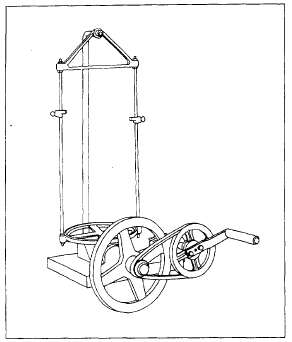|
MECHANICAL ANALYSIS Mechanical analysis is the determination of grain
sizes and the percentage distribution of each size.
A complete mechanical analysis is accomplished in
two parts: sieve analysis and hydrometer
analysis.
Sieve Analysis
A sieve analysis is applicable to soils that are larger
than the No. 200 sieve or that contain small amounts
of material passing the No. 200 sieve. You
can conduct the sieve analysis either on the entire
sample or on the sample after the fines are removed
by prewashing. The apparatus and procedures used
to conduct a sieve analysis are described
below.
APPARATUS. Typical sieve
analysis apparatus includes a gram
weighing balance and a number of
sieves with apertures of varying sizes used
to determine grain sizes (fig. 15-29). Sieves may
be of the ordinary circular SIFTER type (usually
about 8 in. in diameter) or the ROCKER type,
which consists of a rocker frame in which screens
with apertures of various sizes can be placed.
The sieve used for analysis is the so-called standard sieve.
A standard sieve has a square aperture. Screen
sizes are designated as follows: A sieve
with fewer than four apertures to the linear inch
is designated by the size of an aperture; for example,
a 1/4-in., 1/2-in., 3/4-in., or 1-in. sieve. A
sieve with four or more apertures to the linear
inch is designated by a number that represents
the number of apertures to the linear inch.
A No, 4 sieve, for example, has four apertures to
the linear inch, a No. 6 has six apertures, and
so on. The finest sieve used is a No. 200, with 200
apertures to the linear inch and an aperture size
slightly smaller than one two-hundredth of an
inch square.
To conduct a sieve analysis, you need an
electric or hand-operated sieve shaker.

Figure 15-30.-Hand-operated sieve shaker.
The hand-operated shaker is shown in figure 15-30.
|


|

